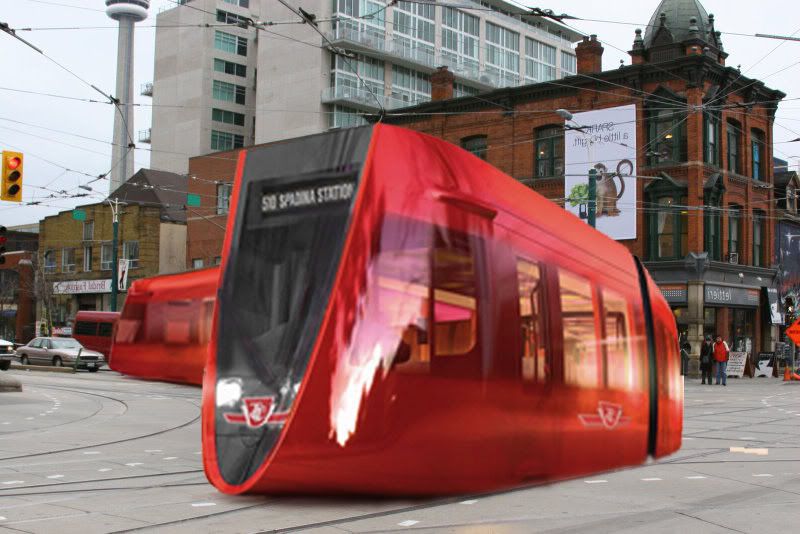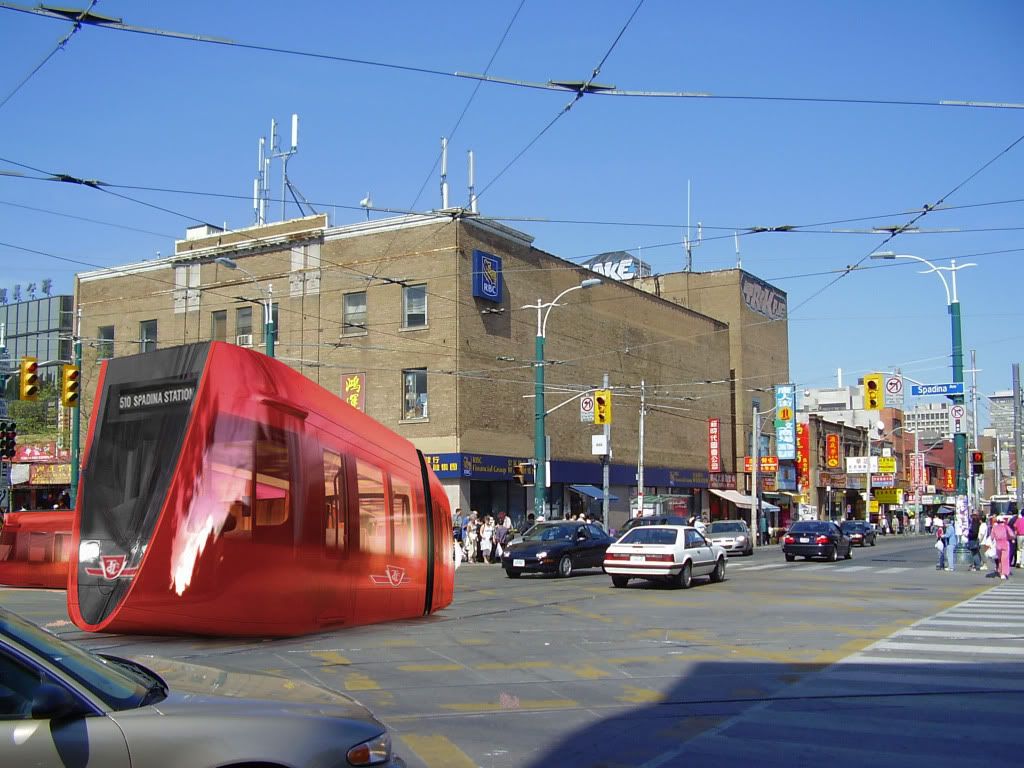scarberiankhatru
Senior Member
Thank you for confirming you don't know straw men when you see them (or see them when they're not there), MisterF.
Whoaccio was correct when he said "I think there is quite a bit of snobbishness about the matter though." This is definitely a factor in general 'bus vs rail' debates, but we're not talking about general transit sentiments, we're talking about Toronto. Certainly, there's some people here who wouldn't be caught dead on a bus, but far fewer people than in the cities that were used as study cases in the articles you linked to (and most people who won't take buses probably won't take any public transit at all, though some might take the special sanitized light rail lines built in the States, the kind that are designed to revitalize and to serve middle class white people and tourists rather than the city at large). In Toronto, millions of people gladly and willingly squish themselves onto buses; almost every bus route is at capacity during rush hour. Clearly, people in Toronto are not opposed to taking the bus (the occasional forum complaint that "eww, buses are suburban" notwithstanding). In Toronto, there's really no association between streetcars and Euro[/useful] style light rail. It's unfair to ascribe "light rail"'s benefits to something like the Queen streetcar, and then write off criticisms of the Queen streetcar as "well, that's not light rail!" but it happens very often on this forum. I'd probably agree that light rail is typically better than buses in multiple categories, but I'd make a firm cleavage between streetcars and light rail before doing so.
Spadina's ridership went up, yes, but how much of that was due to increased capacity? Or due to the increased visibility of the ROW, of the underground connection, and of the occasional promotion as a rapid transit line? Similar improvements could be done with buses...I think the Finch West bus should be replaced with streetcars (well, it should be light rail but I doubt they'll build light rail), but I'll be the first to admit that it could just as easily be replaced by longer articulated buses, using all-door boarding, running in a ROW, and effortlessly connecting with the subway underground (and not in a bus terminal hundreds of feet away). Streetcars don't have a monopoly over comfort, capacity, visibility, etc.
Whoaccio was correct when he said "I think there is quite a bit of snobbishness about the matter though." This is definitely a factor in general 'bus vs rail' debates, but we're not talking about general transit sentiments, we're talking about Toronto. Certainly, there's some people here who wouldn't be caught dead on a bus, but far fewer people than in the cities that were used as study cases in the articles you linked to (and most people who won't take buses probably won't take any public transit at all, though some might take the special sanitized light rail lines built in the States, the kind that are designed to revitalize and to serve middle class white people and tourists rather than the city at large). In Toronto, millions of people gladly and willingly squish themselves onto buses; almost every bus route is at capacity during rush hour. Clearly, people in Toronto are not opposed to taking the bus (the occasional forum complaint that "eww, buses are suburban" notwithstanding). In Toronto, there's really no association between streetcars and Euro[/useful] style light rail. It's unfair to ascribe "light rail"'s benefits to something like the Queen streetcar, and then write off criticisms of the Queen streetcar as "well, that's not light rail!" but it happens very often on this forum. I'd probably agree that light rail is typically better than buses in multiple categories, but I'd make a firm cleavage between streetcars and light rail before doing so.
Spadina's ridership went up, yes, but how much of that was due to increased capacity? Or due to the increased visibility of the ROW, of the underground connection, and of the occasional promotion as a rapid transit line? Similar improvements could be done with buses...I think the Finch West bus should be replaced with streetcars (well, it should be light rail but I doubt they'll build light rail), but I'll be the first to admit that it could just as easily be replaced by longer articulated buses, using all-door boarding, running in a ROW, and effortlessly connecting with the subway underground (and not in a bus terminal hundreds of feet away). Streetcars don't have a monopoly over comfort, capacity, visibility, etc.






